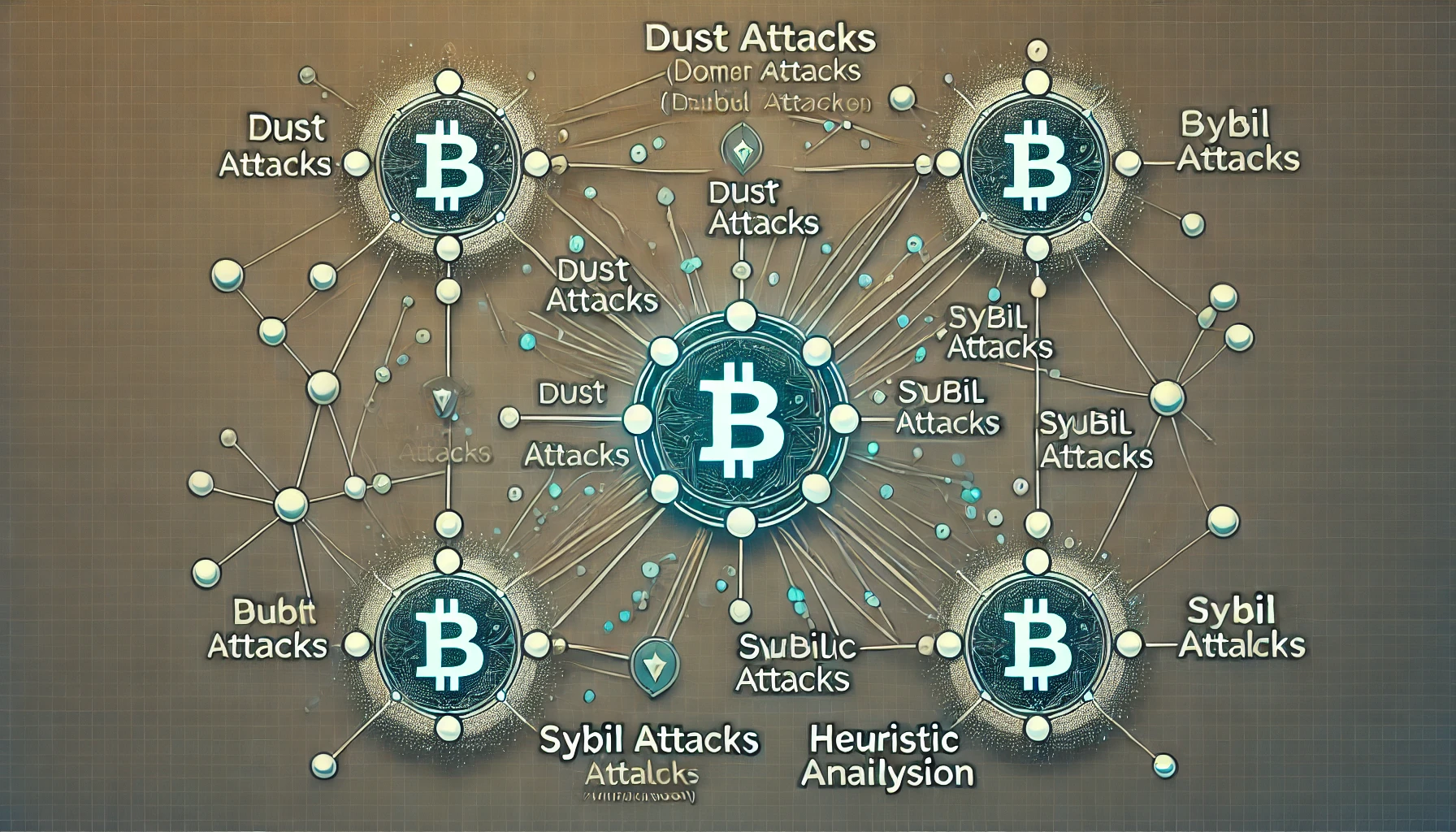De-anonymization in Blockchain: Methods and Challenges
Blockchain, known for its transparency and decentralization, also has an enigmatic side: the perception of anonymity. Although blockchain transactions are pseudonymous, malicious actors exploit these characteristics to conceal illicit activities such as money laundering or crime financing. However, tools and techniques exist that can de-anonymize such activities. Below, we explore some of the most common methods, their challenges, and how they are applied in practice.

10 Methods of De-anonymization in Blockchain
1. Dust Attacks
Attackers send small amounts of cryptocurrency (dust) to multiple wallets, tracking subsequent transactions to identify patterns and connections between addresses. This method can reveal relationships between wallets and help identify users.
2. Sybil Attacks
In this scenario, an attacker controls multiple nodes in the network, collecting data on transactions passing through them. When combined with off-chain analysis, insights into user identities can be obtained.
3. Heuristic Analysis
Researchers use behavioral patterns and historical data to correlate specific activities on the blockchain with real-world identities. This approach is particularly useful for tracing large transfers linked to illicit activities.
4. Chain Hopping
This method tracks asset transfers across different blockchains, a practice often seen in money laundering cases. Advanced tools like Chainalysis map these transactions to identify their origin and final destination.
5. Malicious Links
De-anonymizing someone using a malicious link involves creating a link that tracks information such as the user’s IP address, device, or browser when clicked. This data can be correlated with blockchain activity if the user interacts with wallets or platforms from the same environment, linking their real identity to their pseudonymous activity.
6. Fake Airdrops
This method is becoming increasingly common on social media platforms like X (formerly Twitter). Many users claim to give away “memecoins,” “SOL,” or “Bitcoin” to change someone’s life. They usually ask for wallet addresses. Be cautious—this type of behavior is often associated with data collection schemes.
7. Exchange Leakage
When users interact with centralized exchanges (CEX) and transfer funds between their private wallets and the platform, the exchange collects data such as IP addresses, KYC information, and transaction details. This data can be used to link real-world identities to specific wallets.
8. DNS and ENS Monitoring
Services like Ethereum Name Service (ENS) and other blockchain domain name systems often reveal personalized information linked to wallets, such as usernames or addresses associated with social media profiles.
9. Time-Based Analysis
By tracking the timing of on-chain transactions and correlating them with off-chain events—such as forum posts, social media entries, or public interactions—attackers can deduce the user’s identity.
10. Public Key Reuse
If a user reuses the same public key across different wallets or applications, attackers can link these instances to identify connections between addresses.
Challenges in De-anonymization
1. Enhanced Privacy Features
Technologies like Monero and Zcash implement advanced privacy features such as ring signatures and stealth addresses, making tracking significantly more difficult.
2. Mixing Services
Platforms that mix transactions to obscure traceability remain a significant barrier, although many have been regulated or shut down.
3. Off-chain Tools
Criminals may resort to off-chain transactions to avoid direct traceability, using stablecoins or fiat money.
4. Smart Contracts
Smart contracts, such as bridges or decentralized exchanges (DEXs), can be exploited for laundering illicit assets. For example, stolen funds in ETH could be deposited as collateral in a lending protocol. The user could then take out a loan in another currency and transfer those funds to a different blockchain, effectively obscuring the origin of the assets.
Services and Tools
Security-as-a-Service (SaaS)
Services like those provided by Chainalysis and Elliptic combine on-chain and off-chain analysis to identify suspicious activities. These solutions offer effective traceability and comply with international regulations but are typically paid services.
Open-Source Tools
Free and open-source tools also exist, such as:
- Blackscout: A robust explorer similar to “Etherscan” that can be used via the browser or deployed locally.
- LibreScan: A highly versatile open-source tool that can be deployed locally and connect to any blockchain. (We could create a tutorial on how to install this tool in a future post—what do you think?)
Final Reflection
De-anonymization in blockchain is a double-edged sword. On one hand, it protects honest users and ensures regulatory compliance; on the other, it could threaten the privacy many value in cryptocurrencies. Striking a balance between security and privacy will be a key issue for the future of the blockchain ecosystem.